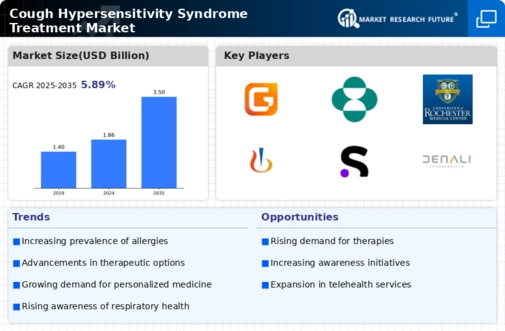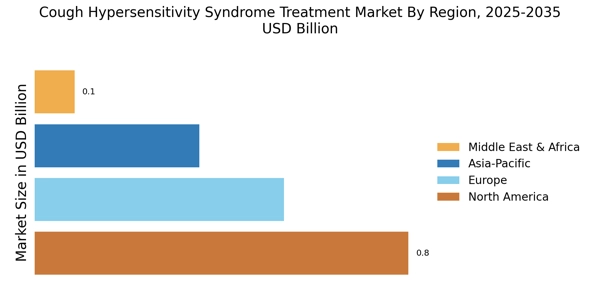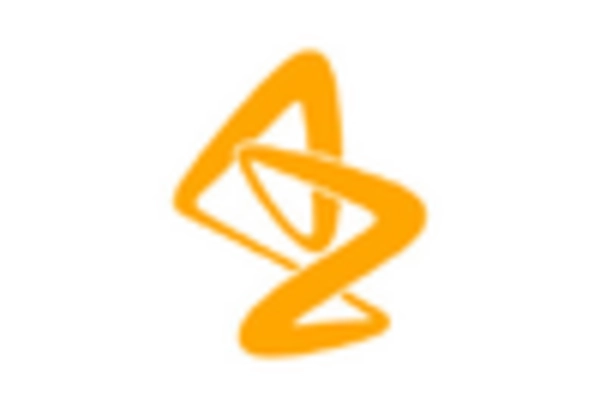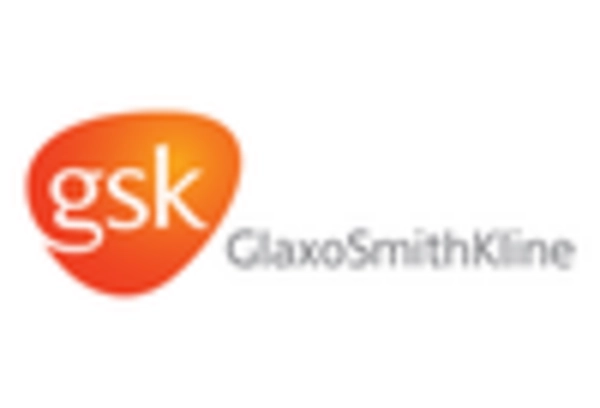Increased Awareness and Education
There is a growing emphasis on awareness and education regarding cough hypersensitivity syndrome, which is likely to drive the Cough Hypersensitivity Syndrome Treatment Market. Healthcare professionals are increasingly recognizing the condition, leading to improved diagnosis and management strategies. Educational initiatives aimed at both patients and providers are fostering a better understanding of the syndrome, which may result in more individuals seeking treatment. This heightened awareness is expected to contribute to market growth, as patients become more informed about their options. Consequently, the Cough Hypersensitivity Syndrome Treatment Market may see an increase in demand for specialized therapies and interventions.
Advancements in Pharmaceutical Research
Recent advancements in pharmaceutical research are poised to significantly impact the Cough Hypersensitivity Syndrome Treatment Market. The development of novel therapeutic agents, including biologics and targeted therapies, suggests a shift towards more effective treatment options. Clinical trials have demonstrated promising results, indicating that these new treatments may offer better efficacy and safety profiles compared to traditional therapies. As pharmaceutical companies invest in research and development, the market is likely to witness an influx of innovative products aimed at addressing cough hypersensitivity. This influx could enhance treatment options for patients and potentially reshape the competitive landscape of the Cough Hypersensitivity Syndrome Treatment Market.
Growing Demand for Combination Therapies
The rising demand for combination therapies is likely to shape the Cough Hypersensitivity Syndrome Treatment Market. Healthcare providers are increasingly recognizing that a multifaceted approach may yield better outcomes for patients suffering from cough hypersensitivity. By combining different therapeutic modalities, such as pharmacological treatments and behavioral interventions, clinicians aim to enhance efficacy and minimize side effects. This trend reflects a broader shift towards personalized medicine, where treatment plans are tailored to individual patient needs. As the market adapts to this demand, the Cough Hypersensitivity Syndrome Treatment Market may witness a surge in innovative combination therapies designed to address the complexities of the condition.
Integration of Telemedicine in Treatment
The integration of telemedicine into healthcare practices is emerging as a transformative factor for the Cough Hypersensitivity Syndrome Treatment Market. Telehealth services facilitate remote consultations, enabling patients to access specialized care without geographical constraints. This trend is particularly beneficial for individuals with chronic coughs, as it allows for timely assessments and management of their condition. The convenience and accessibility of telemedicine may encourage more patients to seek treatment, thereby expanding the market. As healthcare systems continue to adopt digital solutions, the Cough Hypersensitivity Syndrome Treatment Market is likely to benefit from increased patient engagement and adherence to treatment plans.
Rising Prevalence of Respiratory Disorders
The increasing incidence of respiratory disorders, including asthma and chronic obstructive pulmonary disease, appears to be a significant driver for the Cough Hypersensitivity Syndrome Treatment Market. According to recent data, respiratory diseases affect millions, leading to heightened awareness and demand for effective treatments. This trend is likely to propel the market forward, as healthcare providers seek innovative solutions to manage these conditions. The growing population of individuals suffering from chronic coughs and related hypersensitivity issues indicates a potential market expansion. As more patients seek relief from persistent coughs, the Cough Hypersensitivity Syndrome Treatment Market is expected to experience substantial growth, driven by the need for targeted therapies and improved patient outcomes.


















Leave a Comment